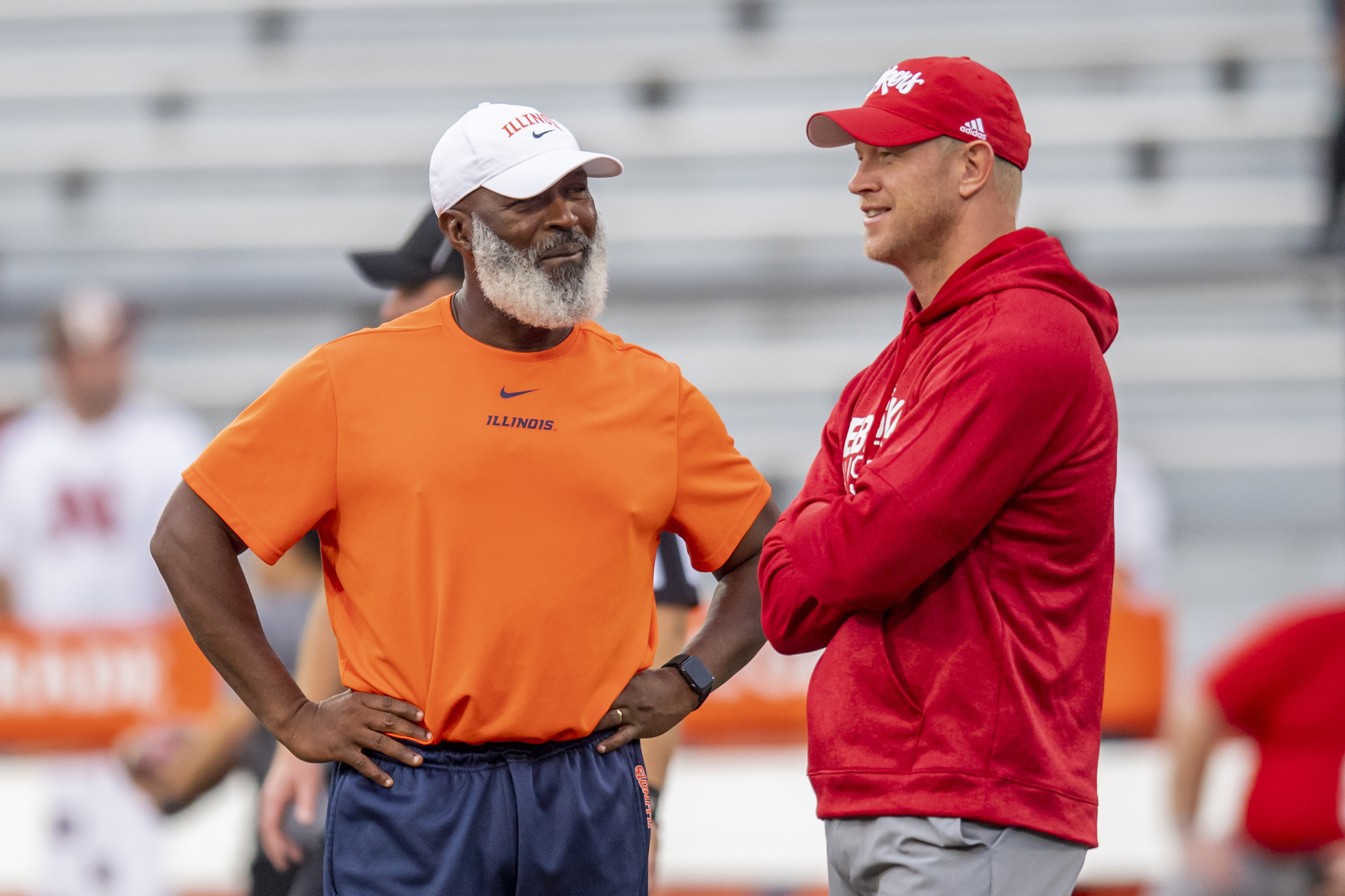Ad Disclosure

This time of year is usually when media types like myself begin evaluating coaching situations at every college football program. We all discuss which coaches are on the “hot seat,” desperate for a big year on the field to save their jobs.
Here’s a way-too-early bold prediction for you: no coach in the B1G is going to have to worry about that this year. The number of college head coaches across the country who should be concerned about their jobs this year is probably minimal, too.
I know, I know, we’re sick and tired of hearing the phrase “unprecedented times,” with those two words seemingly slipping into every news broadcast, radio show, newspaper article and online story. It feels appropriate to insert that phrase here.
Can you remember the last time a conference — maybe an entire sport — entered a year when nobody was on the hot seat? Of course not.
But because of the money that universities have already lost from sending students home from campus, the reduction in revenue split from the NCAA due to the cancellation of the men’s and women’s basketball tournaments and other factors due to the ongoing coronavirus pandemic, now doesn’t seem like the time for schools to make a change at the head coaching position.
The cost would be too expensive for most B1G programs, regardless of how poor the performance is on the field.

Let’s be honest, there aren’t a lot of coaches in the B1G who would’ve been on the hot seat entering the 2020 season anyway. With Rutgers and Michigan State already making changes after the 2019 season, the number of schools that would even be in the market would be minimal.
But let’s pretend there were some coaches on the hot seat this year, a few names who needed to prove they could win on the field in 2020 to retain their jobs moving forward. Let’s imagine a world where Jeff Brohm takes a step back and Purdue finishes 2-10 this season; or Scott Frost fails to lead Nebraska to a bowl game for a third-straight year; or Michigan falls flat against Ohio State for the sixth time under Jim Harbaugh.
If you believe one of those three coaches could potentially be fired after this season, here’s a look at what their buyouts were like following the 2019 season, according to USA Today:
- Jeff Brohm — $27.65 million
- Scott Frost — $20.42 million
- Jim Harbaugh — $11.69 million
Obviously, some of those numbers will shrink a bit after the 2020 season, but it’s a representation of what would be at stake for B1G athletic departments at the end of the college football year. After the 2019 season, seven of 12 B1G head coaches had eight-figure buyouts (omitting Chris Ash because of early termination at Rutgers and Northwestern head coach Pat Fitzgerald’s is unlisted). Only two head coaches were below $5 million — Indiana’s Tom Allen and Illinois’ Lovie Smith.
Can you imagine, right now, an athletic department justifying a $10-$20 million buyout?
If you can, then maybe you should revisit some numbers Nebraska Athletic Director Bill Moos recently shared. In a recent interview with the Omaha World-Herald, Moos said that if Memorial Stadium is only permitted to operate at half-capacity this fall, the school could lose $6 million in game-day revenue alone. If it’s forced to allow just 20,000-30,000 fans inside the stadium, that number would be even higher.
“If the football season doesn’t look like a traditional season, we’re out millions and millions upon millions of dollars,” Moos said. “It’s eye-opening, to say the least.”
That won’t only apply to Nebraska if schools can’t fill their stadiums. Every program in the B1G would take a substantial financial hit with limited seating options.
With several schools across the country cutting staff and athletic programs — mostly at the Group of Five and mid-major level — saving as many dollars as possible during the next academic year will be the smart play.
It’s difficult to pinch pennies when you’re throwing bags of money at a head coach to stop doing his job.

The one name that might surface during this conversation is Smith, who just led Illinois to its first bowl appearance since 2014. Although the Fighting Illini are coming off a strong season, a step in the wrong direction could lead Josh Whitman to begin looking for a replacement.
Smith’s buyout will be just $2 million — pennies on the dollar compared to what other schools would be paying their head coaches to make a change. While that might be affordable enough for Illinois to consider, it doesn’t include the cost of searching for a new head coach, making a lucrative offer and increasing the pool of cash for the next leader to assemble his staff.
Those costs pile up in a hurry. And with Illinois having so much trouble finding a suitable head coach in the past, it might be worth it to allow Smith to return for the 2021 season regardless of what the product looks like this fall.
Who knows, maybe Illinois returns to a bowl game this year and all of this hypothetical talk is irrelevant.
I’m not an economist and I’m not the most business-savvy individual out there, but considering the financial hits that universities and athletic programs have already taken and will likely continue to sustain, even I understand how irresponsible it would be to terminate a head coach with a massive buyout given the current climate.
This season might be the safest ever to be a college football head coach. Maybe we can circle back to the “hot seat” topic before the 2021 campaign kicks off.
Dustin grew up in the heart of Big Ten country and has been in sports media since 2010. He has been covering Big Ten football since 2014. You can follow him on Twitter: @SchutteCFB